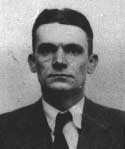Charles Critchfield (1910-1994) was an American mathematical physicist.
In December 1942, he was approached by J. Robert Oppenheimer and Edward Teller to join the Manhattan Project at Los Alamos, but respectfully declined until he was involuntarily assigned there the following April. Critchfield used his ordnance knowledge and skills as a mathematical physicist to head the E-4 (Target, Projectile, and Source) group, which investigated the use of the gun-type nuclear weapon.
In 1943, Critchfield’s group was placed under Navy Capt. William Parsons, who was then second in command at Los Alamos and director of the Ordnance Division. He was assigned to work on gun-type fission weapons Little Boy and Thin Man. When the Thin Man design would not work, he began working with Gadget Division.
The following information was provided by Charles’ son, Robert:
My father undertook both his undergraduate and graduate studies at George Washington University, where he was a research fellow and earned his PhD in physics. His principal graduate professors there were George Gamow and Edward Teller and he was present, at GWU, when Niels Bohr publicly announced the discovery of fission by Lise Meitner and Otto Frisch. He was subsequently awarded a scholarship by the American-Scandinavian Foundation to study at Bohr’s Institute for Theoretical Physics in Copenhagen, but he reluctantly declined due to the turmoil and uncertainty being inflicted by Nazi Germany at that time. He also had a post-doctoral offer from J. Robert Oppenheimer at Berkeley but chose instead to accept a post-doc appointment with Eugene Wigner at Princeton.
In December of 1942 he received a personal visit from Oppenheimer and Teller for the purpose of recruiting him to join the project at Los Alamos. He nonetheless declined their offer because he was already doing important war-related work, had a newborn son and he and his wife were wanting to have yet another child… me, as it turned out. In April of 1943 he was involuntarily assigned to Los Alamos, but quite eagerly accepted his fate because by then General Groves had acquiesced to allowing the laboratory staff to retain their civilian status and to bring their families along with them.
After the war my father worked briefly at Oak Ridge and then accepted a professorship with the University of Minnesota’s physics department. There he worked closely with Project Y alumnus John Williams and also conducted classified high-altitude research for the Air Force, which resulted in the development of the high-altitude helium envelopes that are still in use today. During his tenure at the University of Minnesota he also took a year’s sabbatical leave (1952/1953) to return to Los Alamos for work on the H-bomb project.
In 1955 his friend John von Neumann convinced him to relinquish his professorship and join the “space race”, where he took a position with General Dynamic’s Convair division as their vice-president for research. In that capacity he headed up the Atlas missile project, which succeeded in successfully launching our nation’s first satellites. Wanting to return to his first love of teaching, in 1961 he accepted a professorship at the University of Wisconsin but he never made it to Madison.
Word of his pending change of employment reached his friends at LASL, and Carson Mark and Norris Bradbury put together a package to offer him a teaching position at the Laboratory. This involved creating a new group (T-9) in Mark’s division, composed of post-docs whom my father would mentor. The opportunity to teach exclusively at the post-doctoral level while having access to the Laboratory’s world-class resources (notably its technical staff and computer capability) did the trick, and he gladly returned to Los Alamos. In 1977 he was forced by then LASL policy to retire, yet he remained active at the Lab as a consultant until his death in 1994.





